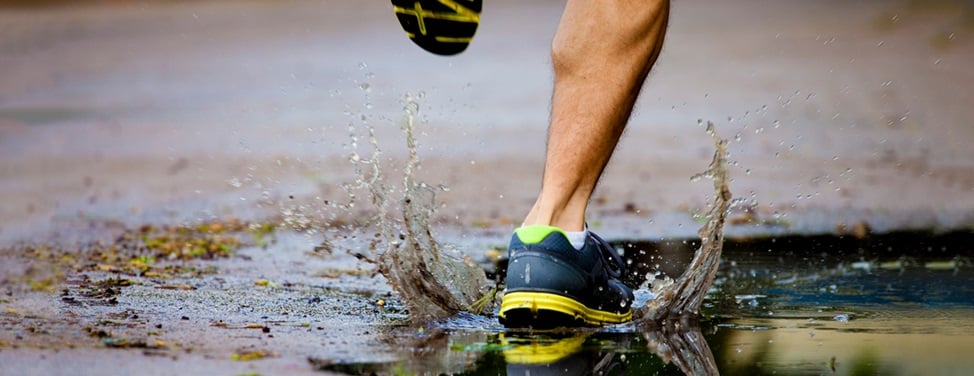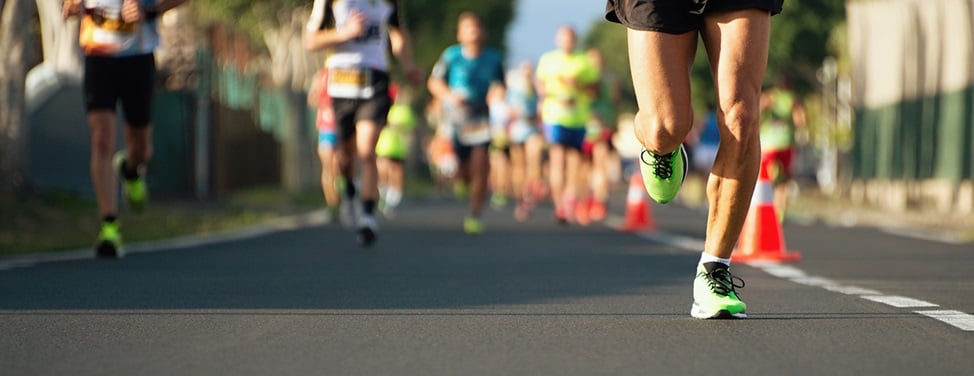
Running a Marathon: Training Tips
Participating in a marathon should be a fun, rewarding and safe experience. However, preparing for a marathon requires a lot of time, discipline and commitment, and can often feel overwhelming and, in some cases, result in injury. This is especially true if you are new to running or are running your first marathon.
Here are some tips from specialists at the RunSafe Clinic that will help you get the most out of your marathon training. And remember, it's not just about how fast you finish the race, it's about avoiding injury and having fun.
There are a variety of effective and detailed training plans available for beginner, intermediate and advanced runners. A sports medicine specialist can help design a specific training plan for your level.
Since a marathon is considered the ultimate running challenge, it's important to make sure that your body is up for the challenge. Ideally, you should only attempt a marathon if you:
- Have been running for at least a year
- Are able to cover 15 to 25 miles a week comfortably
- Have previous experience running one or two 5K races
- Have 18 weeks to train
Training Tips
Alternate easy and hard days of training.
Your individual training schedule will depend on your level. However, one basic principle that applies to all runners is to alternate easy days of training with hard days, which include long runs or speed work. For instance, you never want to run two hard days in a row, even if you recently missed a day of training. Running on hilly terrain greatly improves your stamina and strength. Regular runs on hills should become part of your training program, which is easy to do in San Francisco.
Run with others.
Although some people prefer to train and run by themselves, finding a partner or group who also is preparing for a marathon, can provide support, advice, structure and motivation.
Warm up and cool down.
Warming up and cooling down are essential parts of every run and should not be skipped. By properly warming up and cooling down, you can prevent injuries and get the most out of your workout or race.
During a warm up, you will gradually prepare your heart, lungs, muscles and tendons for the exertion of each training run or race. It can last anywhere from 5 to 60 minutes, and should include:
- Gentle loosening exercises
- Light jogging
- Static stretching
- Event specific exercise, such as sprinting or jumping over hurdles or running strides at race speed
As soon as you finish a workout or race, you should begin your cool down, which not only helps your body recover but also prepares it for its next workout. A cool down can include about 10 minutes of some easy running or jogging to encourage the heart and lungs to gradually return to their normal rates. This is also the best time for stretching and self massage, because your muscles are very loose. Stretching gets your muscles ready for the next day's workout. During stretching exercises, you should hold the position for between 15 to 20 seconds, and repeat two or three times per area.
Stay hydrated and fueled up.
Hydration and nutrition are very important to the success of your training runs and race. During training, you should drink lots of fluids all day long, to stay well hydrated. You should drink water or a sports drink while running, especially when going over 90 minutes. Do not wait to feel thirsty to drink something; at that point, your body is already dehydrated. A simple way to see how much fluid you require is to check your weight before and after a long run. Losing more than 2 percent of your body weight means you may not be replacing enough of your fluid losses. Also, if you have little urine after the run and it looks concentrated (dark yellow), you probably need a little more fluid. Staying well hydrated can help your performance.
You also should plan to eat during any training run that lasts 90 minutes or more. Energy bars, energy gels, fruit, bagels and sugary snacks are all good options for boosting your energy. During your training runs, it is useful to test what quantity and combination of food and drink works best for you, so that you can replicate it on the day of the marathon.
Wear proper shoes and running gear.
Be sure to wear high-quality running shoes while training. Most running shoes last a maximum of 500 miles and should be replaced once you've "outrun" them. Wearing old running shoes can result in injury. Also, it is highly recommended that you purchase your running gear, especially your sneakers, at a specialty shop where the salespeople are often runners themselves and are trained to help you select the best shoe for your needs. In addition, you should wear good socks, which are a great investment because they can minimize the occurrence for painful blisters.
When dressing for your runs, you should pay attention to the weather forecast and, in most cases, wear less clothing than you think you'll need. By overdressing, you can increase your risk for dehydration and prevent your body from properly cooling down.
In addition, it is important to run in the sneakers, socks and clothes you plan to wear during the marathon before the big day. By giving your gear a test run and breaking in your shoes, you can prevent any unforeseen aggravations and discomfort.
Mind the surface on which you run.
The type of surface you run on can impact your training and, in some cases, contribute to injuries. In fact, one of the five leading causes of injury is an improper running surface. Every runner has their own preference about where they like to run and on what kind of surface, such as on a treadmill, concrete, grass, sand, trails, etc. However, hard surfaces, such as concrete and asphalt, create the most shock to your joints, which can lead to injuries. At the same time, sand, which is usually a soft surface, is not recommended for running – unless it is completely flat and hard packed – because the softness of the sand can increase your risk of an Achilles tendon injury. Although the sand is firmer at the water's edge, the tilt of the surface puts uneven stresses on the body.
While each surface has its pros and cons, the best and safest surfaces are those that are moderately smooth and level, and absorb the most shock. Grass, particularly close cropped and even turf, such as golf courses, is often rated as the best surface to run on. While grass is soft and easy on the legs because it absorbs shock, it also makes your muscles work hard. However, these areas are often uneven and slippery when wet, and can be dangerous for runners with unstable ankles. Other top recommended training surfaces include woodland trails, earth and treadmills.
In the end, it's a good idea to train on the environment you're going to run on and usually that's asphalt, which makes up most city streets. If you are having problems, consider changing the training surface and make sure you aren't increasing your mileage too aggressively.
Be careful of injuries.
If you do happen to injure yourself during training, you should be careful. Subtle signs of worsening injuries are if you begin to alter your running technique or you have prolonged symptoms. If your symptoms do not improve, you should visit a doctor for a diagnosis and treatment advice. And, if you sense the beginnings of an injury, you should rest or cross train for one to three days until you feel better. Biking, swimming or the elliptical machine at the gym are nice ways to keep your cardio up but gives your legs a rest.
Listen to your body.
Although consistency is very important when training for a marathon, if your body feels particularly tired one day, heed its call and take a rest. Training for a marathon involves a lot of wear and tear on your body, therefore getting adequate sleep and rest during this period is essential so that you don't burn out before the race.
Taper before the race.
One of the most important aspects of your marathon training is the tapering period, which is considered the last 21 days before the marathon. During this time, you should run less and rest a lot more by reducing your weekly and long run mileage. This allows you to fully recover from the previous workouts and prepare for the actual marathon. Your individual training schedule will have more specific information on how much you should taper your runs in the final three weeks.
UCSF Health medical specialists have reviewed this information. It is for educational purposes only and is not intended to replace the advice of your doctor or other health care provider. We encourage you to discuss any questions or concerns you may have with your provider.








